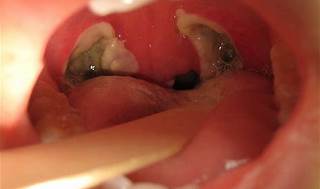A nurse is teaching the parent of a school-age child about bicycle safety.
Which of the following instructions should the nurse include in the teaching?
Your child should walk the bicycle through intersections
your child's feet should be three to six inches off the ground when Seated on the bicycle
you should try to keep the bicycle at least three feet from the curb while riding in the street
your child should ride the bicycle against the flow of traffic
Correct Answer : A
The correct answer is choice A. Your child should walk the bicycle through intersections.
Choice A rationale:
Walking the bicycle through intersections is a key safety measure to prevent accidents. It ensures that the child is more visible to drivers and reduces the risk of collisions.
Choice B rationale:
This is incorrect because the child’s feet should be able to touch the ground comfortably when seated on the bicycle, but not necessarily three to six inches off the ground. Proper seat height is crucial for balance and control.
Choice C rationale:
Keeping the bicycle at least three feet from the curb is not a standard safety recommendation. Instead, children should ride as close to the curb as safely possible, following the flow of traffic.
Choice D rationale:
Riding against the flow of traffic is dangerous and increases the risk of accidents. Bicyclists should always ride with the flow of traffic to be more predictable to drivers.
Nursing Test Bank
Naxlex Comprehensive Predictor Exams
Related Questions
Correct Answer is C
Explanation
Choice A rationale
Jacket restraints are typically used to secure a child’s arms during procedures. They are not specifically designed for venipuncture in infants.
Choice Drationale
Elbow restraints are used to secure the child’s elbows, often during procedures involving the upper body. They are not typically used for venipuncture.
Choice Brationale
Mitten restraints are used to prevent the child from scratching or removing tubes. They are not typically used for venipuncture.
Choice Crationale
Mummy restraints are often used for infants during procedures like venipuncture. They allow the child to be wrapped securely while leaving one area exposed for the procedure.
Correct Answer is ["A"]
Explanation

The correct answer is choice a. Discourage the child from coughing.
Choice A rationale:
Discouraging the child from coughing is important because coughing can dislodge clots and cause bleeding at the surgical site, which is a common complication after a tonsillectomy.
Choice B rationale:
Providing cranberry juice to the child is not recommended because acidic juices can irritate the throat and cause discomfort or pain.
Choice C rationale:
Maintaining the child in a supine position is not ideal as it can increase the risk of aspiration. Instead, the child should be positioned on their side or with the head elevated to facilitate drainage and reduce the risk of aspiration.
Choice D rationale:
Administering an analgesic to the child on a scheduled basis is important for pain management, but it is not the most immediate action to take one hour postoperatively. Pain management should be part of the overall care plan.
Whether you are a student looking to ace your exams or a practicing nurse seeking to enhance your expertise , our nursing education contents will empower you with the confidence and competence to make a difference in the lives of patients and become a respected leader in the healthcare field.
Visit Naxlex, invest in your future and unlock endless possibilities with our unparalleled nursing education contents today
Report Wrong Answer on the Current Question
Do you disagree with the answer? If yes, what is your expected answer? Explain.
Kindly be descriptive with the issue you are facing.
